-
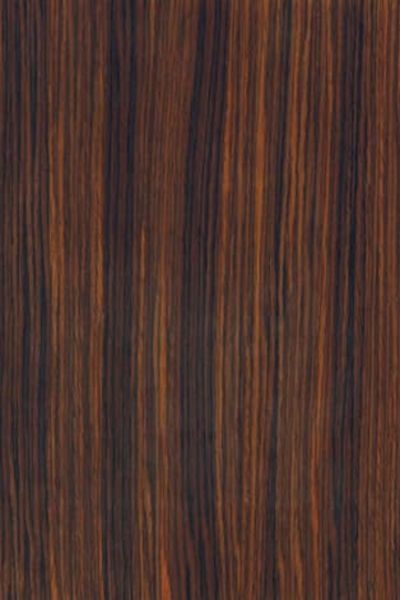 This elegant, tobacco-colored veneer is similar to Brazilian Rosewood but somewhat less contrasty in color. Rich hues range from dark chocolate brown to violet and even black in lively combinations that produce a one-of-a-kind look prized for architectural use. Flat cut, the wood shows a beautiful cathedral pattern; quartered it produces a straight or broken stripe effect. Learn About Veneer Cut & Matching
This elegant, tobacco-colored veneer is similar to Brazilian Rosewood but somewhat less contrasty in color. Rich hues range from dark chocolate brown to violet and even black in lively combinations that produce a one-of-a-kind look prized for architectural use. Flat cut, the wood shows a beautiful cathedral pattern; quartered it produces a straight or broken stripe effect. Learn About Veneer Cut & Matching -
 Brookside Veneers, Produced by Alpi Spa. Learn About Veneer Cut & Matching
Brookside Veneers, Produced by Alpi Spa. Learn About Veneer Cut & Matching -
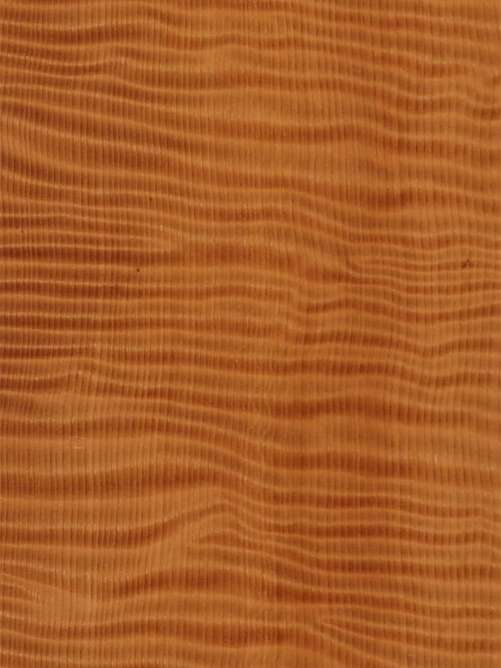 Among the largest and tallest trees on earth, the redwood produces a rich, warm, inviting veneer that’s as impressive as the tree. Uniformly deep reddish-brown, the grain in quarter cut veneer is beautifully striped or figured by fine markings. Burled veneer (also known as vavona burl) is sliced from huge, prolific burl growths found on occasional redwoods, producing some of the largest and most uniforms burled veneers in the world. Learn About Veneer Cut & Matching
Among the largest and tallest trees on earth, the redwood produces a rich, warm, inviting veneer that’s as impressive as the tree. Uniformly deep reddish-brown, the grain in quarter cut veneer is beautifully striped or figured by fine markings. Burled veneer (also known as vavona burl) is sliced from huge, prolific burl growths found on occasional redwoods, producing some of the largest and most uniforms burled veneers in the world. Learn About Veneer Cut & Matching -
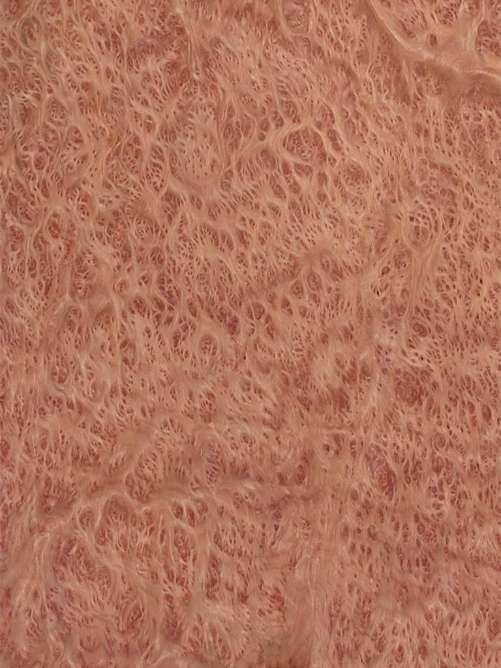 Among the largest and tallest trees on earth, the redwood produces a rich, warm, inviting veneer that’s as impressive as the tree. Uniformly deep reddish-brown, the grain in quarter cut veneer is beautifully striped or figured by fine markings. Burled veneer (also known as vavona burl) is sliced from huge, prolific burl growths found on occasional redwoods, producing some of the largest and most uniforms burled veneers in the world. Learn About Veneer Cut & Matching
Among the largest and tallest trees on earth, the redwood produces a rich, warm, inviting veneer that’s as impressive as the tree. Uniformly deep reddish-brown, the grain in quarter cut veneer is beautifully striped or figured by fine markings. Burled veneer (also known as vavona burl) is sliced from huge, prolific burl growths found on occasional redwoods, producing some of the largest and most uniforms burled veneers in the world. Learn About Veneer Cut & Matching -
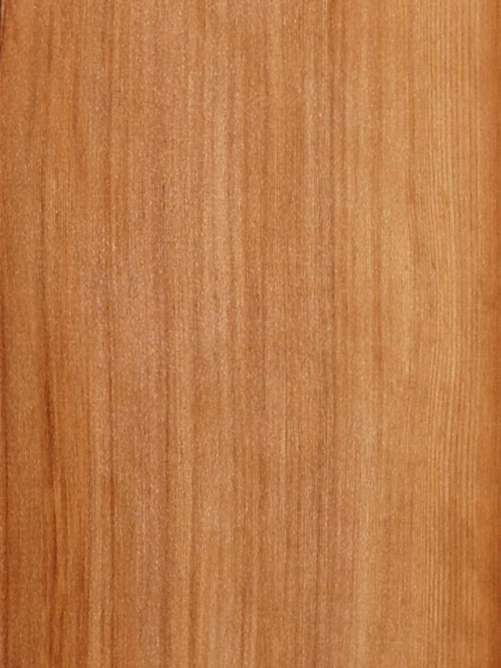 Among the largest and tallest trees on earth, the redwood produces a rich, warm, inviting veneer that’s as impressive as the tree. Uniformly deep reddish-brown, the grain in quarter cut veneer is beautifully striped or figured by fine markings. Burled veneer (also known as vavona burl) is sliced from huge, prolific burl growths found on occasional redwoods, producing some of the largest and most uniforms burled veneers in the world. Learn About Veneer Cut & Matching
Among the largest and tallest trees on earth, the redwood produces a rich, warm, inviting veneer that’s as impressive as the tree. Uniformly deep reddish-brown, the grain in quarter cut veneer is beautifully striped or figured by fine markings. Burled veneer (also known as vavona burl) is sliced from huge, prolific burl growths found on occasional redwoods, producing some of the largest and most uniforms burled veneers in the world. Learn About Veneer Cut & Matching -
 This rare and beautiful, light-colored Central American tree grows in a dog-leg fashion, making straight sections over 10’ uncommon. Because it must be cut when the sap is low, native loggers watch the phases of the moon, waiting for the waning phases when the sap is limited to harvest. Yellowish-red in color, and streaked by brown, red, or orange, the wood produces a range of beautiful figures and is highly prized for architectural work. Learn About Veneer Cut & Matching
This rare and beautiful, light-colored Central American tree grows in a dog-leg fashion, making straight sections over 10’ uncommon. Because it must be cut when the sap is low, native loggers watch the phases of the moon, waiting for the waning phases when the sap is limited to harvest. Yellowish-red in color, and streaked by brown, red, or orange, the wood produces a range of beautiful figures and is highly prized for architectural work. Learn About Veneer Cut & Matching -
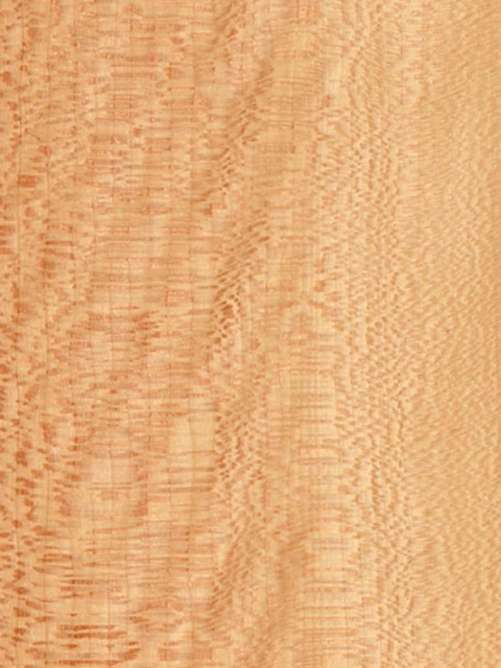 Planetree is a particularly decorative veneer—reddish-gray with a silvery sheen, straight grain, and a lovely small flake in quarter cut veneer, the result of cutting through its extremely regular medullary rays. Found in wetland habitats across Europe, it's said to be the specie of the famed Solitary Tree that legend says marked the spot of the battle between Alexander the Great and Darius in northern Persia. Learn About Veneer Cut & Matching
Planetree is a particularly decorative veneer—reddish-gray with a silvery sheen, straight grain, and a lovely small flake in quarter cut veneer, the result of cutting through its extremely regular medullary rays. Found in wetland habitats across Europe, it's said to be the specie of the famed Solitary Tree that legend says marked the spot of the battle between Alexander the Great and Darius in northern Persia. Learn About Veneer Cut & Matching -
 A cousin of the hickory, the pecan tree was so central to native Americans in the lower Mississippi River valley that it was associated with the Great Spirit. Today the tree is cultivated in southern orchards for nuts and is prized as a fine cabinet wood. It has a typically straight grain, a medium texture, low natural sheen, a medium reddish-brown heartwood and paler yellow sapwood, and maybe figured. Pecan stains well and is sometimes stained to match or replicate other woods. Learn About Veneer Cut & Matching
A cousin of the hickory, the pecan tree was so central to native Americans in the lower Mississippi River valley that it was associated with the Great Spirit. Today the tree is cultivated in southern orchards for nuts and is prized as a fine cabinet wood. It has a typically straight grain, a medium texture, low natural sheen, a medium reddish-brown heartwood and paler yellow sapwood, and maybe figured. Pecan stains well and is sometimes stained to match or replicate other woods. Learn About Veneer Cut & Matching -
 This European fruit tree produces a very fine-grained wood with a uniform texture and a partial flame that is both beautiful and decorative. The wood is often pith-marked and occurs in colors from rosy cream to light reddish brown in both plain and figured logs. When fumed, pearwood turns a rich, dark brown; when stained black, it provides an excellent substitute for ebony. Learn About Veneer Cut & Matching
This European fruit tree produces a very fine-grained wood with a uniform texture and a partial flame that is both beautiful and decorative. The wood is often pith-marked and occurs in colors from rosy cream to light reddish brown in both plain and figured logs. When fumed, pearwood turns a rich, dark brown; when stained black, it provides an excellent substitute for ebony. Learn About Veneer Cut & Matching -
 This wood is indigenous to the Yucatan Peninsula and is prized for its dramatic, saturated coloring—reddish brown with black, violets, and oranges typically mixed in. The grain is typically straight with some irregularity. It’s a premier choice for high-end furniture and interiors and is highly regarded as a tonewood for marimbas and xylophones, earning its nickname “the wood that sings. Learn About Veneer Cut & Matching
This wood is indigenous to the Yucatan Peninsula and is prized for its dramatic, saturated coloring—reddish brown with black, violets, and oranges typically mixed in. The grain is typically straight with some irregularity. It’s a premier choice for high-end furniture and interiors and is highly regarded as a tonewood for marimbas and xylophones, earning its nickname “the wood that sings. Learn About Veneer Cut & Matching -
 At first glance, paldao resembles American black walnut. This enormous tree is most often found along streams and marshy soils in Indonesia and the Philippines. Paldao grows with a remarkable buttress encircling the lower trunk creating 40’ diameter growths which remote tribes believed held sprits. This is a beautiful veneer: a grey-brown background streaked with highly decorative dark stripes. Flat cut wood produces a cathedral pattern; quarter cut wood has a stripy contrast and is often finely figured. Learn About Veneer Cut & Matching
At first glance, paldao resembles American black walnut. This enormous tree is most often found along streams and marshy soils in Indonesia and the Philippines. Paldao grows with a remarkable buttress encircling the lower trunk creating 40’ diameter growths which remote tribes believed held sprits. This is a beautiful veneer: a grey-brown background streaked with highly decorative dark stripes. Flat cut wood produces a cathedral pattern; quarter cut wood has a stripy contrast and is often finely figured. Learn About Veneer Cut & Matching -
 In folklore, white oak is a symbol of strength and longevity. This domestic standard is a bit smaller in diameter than European oak and ranges in color from biscuit to golden brown to somewhat gray. It has a distinctive grain pattern and abundant angular pores that produce a wonderful flake pattern in the quarter and flat cut veneers. Rift cut, the veneer produces a straight, combed grain with minimal flake. Fumed, the wood turns a warm dark brown reminiscent of Arts & Crafts-style furniture. Rustic options have rich character marks and grain variations for a truly rustic look (intended for random matched sequences). Also available in recon and rough cut. Learn About Veneer Cut & Matching
In folklore, white oak is a symbol of strength and longevity. This domestic standard is a bit smaller in diameter than European oak and ranges in color from biscuit to golden brown to somewhat gray. It has a distinctive grain pattern and abundant angular pores that produce a wonderful flake pattern in the quarter and flat cut veneers. Rift cut, the veneer produces a straight, combed grain with minimal flake. Fumed, the wood turns a warm dark brown reminiscent of Arts & Crafts-style furniture. Rustic options have rich character marks and grain variations for a truly rustic look (intended for random matched sequences). Also available in recon and rough cut. Learn About Veneer Cut & Matching -
 In folklore, white oak is a symbol of strength and longevity. This domestic standard is a bit smaller in diameter than European oak and ranges in color from biscuit to golden brown to somewhat gray. It has a distinctive grain pattern and abundant angular pores that produce a wonderful flake pattern in the quarter and flat cut veneers. Rift cut, the veneer produces a straight, combed grain with minimal flake. Fumed, the wood turns a warm dark brown reminiscent of Arts & Crafts-style furniture. Rustic options have rich character marks and grain variations for a truly rustic look (intended for random matched sequences). Also available in recon and rough cut. Learn About Veneer Cut & Matching
In folklore, white oak is a symbol of strength and longevity. This domestic standard is a bit smaller in diameter than European oak and ranges in color from biscuit to golden brown to somewhat gray. It has a distinctive grain pattern and abundant angular pores that produce a wonderful flake pattern in the quarter and flat cut veneers. Rift cut, the veneer produces a straight, combed grain with minimal flake. Fumed, the wood turns a warm dark brown reminiscent of Arts & Crafts-style furniture. Rustic options have rich character marks and grain variations for a truly rustic look (intended for random matched sequences). Also available in recon and rough cut. Learn About Veneer Cut & Matching -
 In folklore, white oak is a symbol of strength and longevity. This domestic standard is a bit smaller in diameter than European oak and ranges in color from biscuit to golden brown to somewhat gray. It has a distinctive grain pattern and abundant angular pores that produce a wonderful flake pattern in the quarter and flat cut veneers. Rift cut, the veneer produces a straight, combed grain with minimal flake. Fumed, the wood turns a warm dark brown reminiscent of Arts & Crafts-style furniture. Rustic options have rich character marks and grain variations for a truly rustic look (intended for random matched sequences). Also available in recon and rough cut. Learn About Veneer Cut & Matching
In folklore, white oak is a symbol of strength and longevity. This domestic standard is a bit smaller in diameter than European oak and ranges in color from biscuit to golden brown to somewhat gray. It has a distinctive grain pattern and abundant angular pores that produce a wonderful flake pattern in the quarter and flat cut veneers. Rift cut, the veneer produces a straight, combed grain with minimal flake. Fumed, the wood turns a warm dark brown reminiscent of Arts & Crafts-style furniture. Rustic options have rich character marks and grain variations for a truly rustic look (intended for random matched sequences). Also available in recon and rough cut. Learn About Veneer Cut & Matching -
 In folklore, white oak is a symbol of strength and longevity. This domestic standard is a bit smaller in diameter than European oak and ranges in color from biscuit to golden brown to somewhat gray. It has a distinctive grain pattern and abundant angular pores that produce a wonderful flake pattern in the quarter and flat cut veneers. Rift cut, the veneer produces a straight, combed grain with minimal flake. Fumed, the wood turns a warm dark brown reminiscent of Arts & Crafts-style furniture. Rustic options have rich character marks and grain variations for a truly rustic look (intended for random matched sequences). Also available in recon and rough cut. Learn About Veneer Cut & Matching
In folklore, white oak is a symbol of strength and longevity. This domestic standard is a bit smaller in diameter than European oak and ranges in color from biscuit to golden brown to somewhat gray. It has a distinctive grain pattern and abundant angular pores that produce a wonderful flake pattern in the quarter and flat cut veneers. Rift cut, the veneer produces a straight, combed grain with minimal flake. Fumed, the wood turns a warm dark brown reminiscent of Arts & Crafts-style furniture. Rustic options have rich character marks and grain variations for a truly rustic look (intended for random matched sequences). Also available in recon and rough cut. Learn About Veneer Cut & Matching -
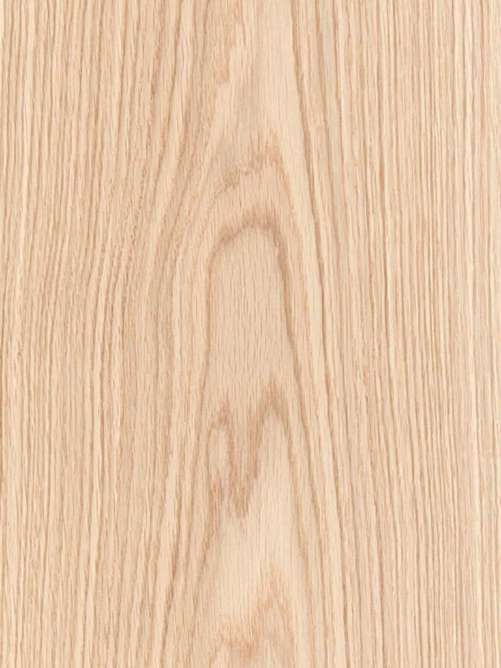 In folklore, white oak is a symbol of strength and longevity. This domestic standard is a bit smaller in diameter than European oak and ranges in color from biscuit to golden brown to somewhat gray. It has a distinctive grain pattern and abundant angular pores that produce a wonderful flake pattern in the quarter and flat cut veneers. Rift cut, the veneer produces a straight, combed grain with minimal flake. Fumed, the wood turns a warm dark brown reminiscent of Arts & Crafts-style furniture. Rustic options have rich character marks and grain variations for a truly rustic look (intended for random matched sequences). Also available in recon and rough cut. Learn About Veneer Cut & Matching
In folklore, white oak is a symbol of strength and longevity. This domestic standard is a bit smaller in diameter than European oak and ranges in color from biscuit to golden brown to somewhat gray. It has a distinctive grain pattern and abundant angular pores that produce a wonderful flake pattern in the quarter and flat cut veneers. Rift cut, the veneer produces a straight, combed grain with minimal flake. Fumed, the wood turns a warm dark brown reminiscent of Arts & Crafts-style furniture. Rustic options have rich character marks and grain variations for a truly rustic look (intended for random matched sequences). Also available in recon and rough cut. Learn About Veneer Cut & Matching -
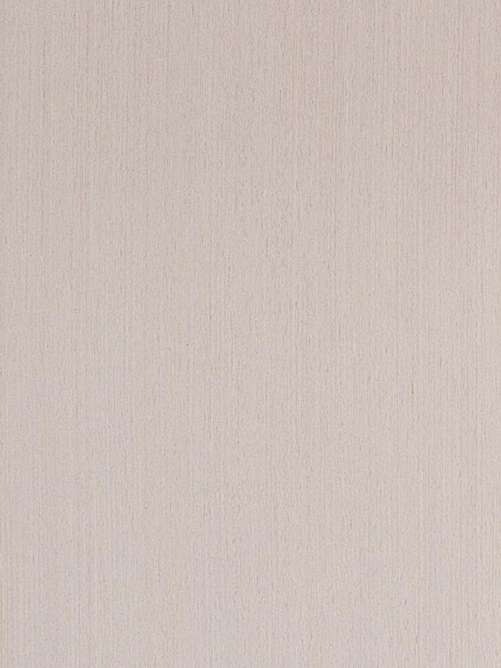 Reconstituted Veneer is a rotary cut veneer created from fast-growing secondary species, then dyed, layered, laminated, and laid up with grain that replicates a natural species. It offers outstanding consistency in color and grain. Learn About Veneer Cut & Matching
Reconstituted Veneer is a rotary cut veneer created from fast-growing secondary species, then dyed, layered, laminated, and laid up with grain that replicates a natural species. It offers outstanding consistency in color and grain. Learn About Veneer Cut & Matching -
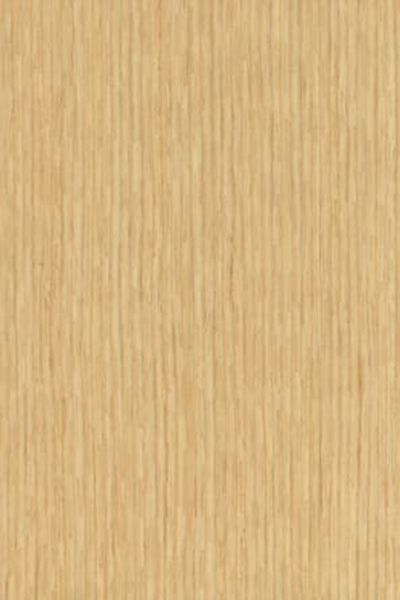 Brookside Veneers, Produced by Alpi Spa. Learn About Veneer Cut & Matching
Brookside Veneers, Produced by Alpi Spa. Learn About Veneer Cut & Matching -
 North American oak is well suited for rustic or modern interiors. While different growing conditions can produce a range of colors, in general, it’s slightly redder, more uniform in color, and has a less prominent flake figure than white oak. The grain is firm and straight, somewhat coarse with large pores. Rift cut veneer produces a very straight, combed grain effect. Learn About Veneer Cut & Matching
North American oak is well suited for rustic or modern interiors. While different growing conditions can produce a range of colors, in general, it’s slightly redder, more uniform in color, and has a less prominent flake figure than white oak. The grain is firm and straight, somewhat coarse with large pores. Rift cut veneer produces a very straight, combed grain effect. Learn About Veneer Cut & Matching -
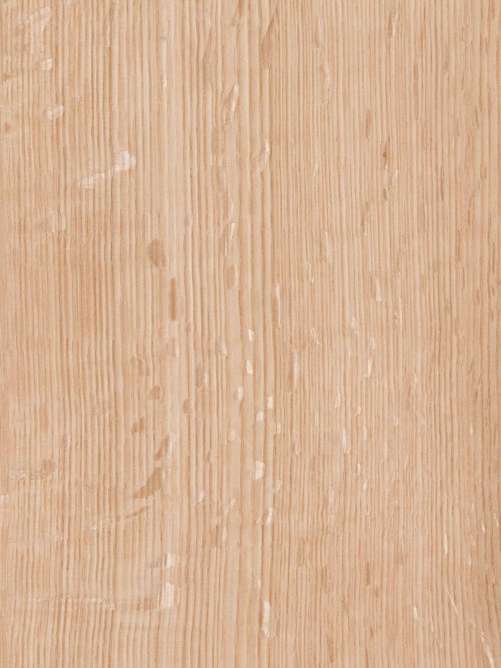 North American oak is well suited for rustic or modern interiors. While different growing conditions can produce a range of colors, in general, it’s slightly redder, more uniform in color, and has a less prominent flake figure than white oak. The grain is firm and straight, somewhat coarse with large pores. Rift cut veneer produces a very straight, combed grain effect. Learn About Veneer Cut & Matching
North American oak is well suited for rustic or modern interiors. While different growing conditions can produce a range of colors, in general, it’s slightly redder, more uniform in color, and has a less prominent flake figure than white oak. The grain is firm and straight, somewhat coarse with large pores. Rift cut veneer produces a very straight, combed grain effect. Learn About Veneer Cut & Matching -
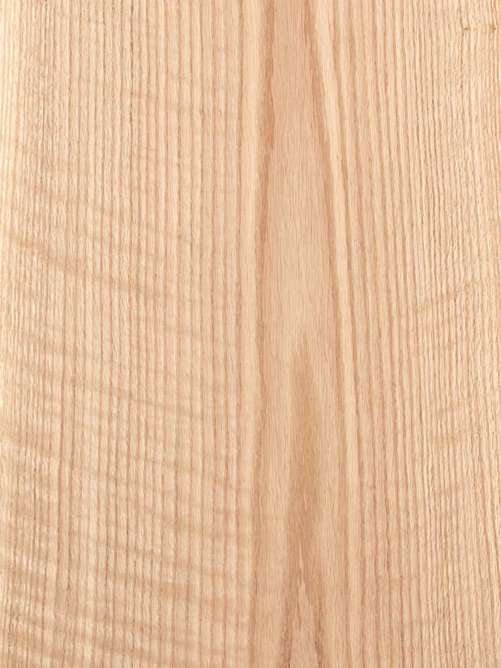 North American oak is well suited for rustic or modern interiors. While different growing conditions can produce a range of colors, in general, it’s slightly redder, more uniform in color, and has a less prominent flake figure than white oak. The grain is firm and straight, somewhat coarse with large pores. Rift cut veneer produces a very straight, combed grain effect. Learn About Veneer Cut & Matching
North American oak is well suited for rustic or modern interiors. While different growing conditions can produce a range of colors, in general, it’s slightly redder, more uniform in color, and has a less prominent flake figure than white oak. The grain is firm and straight, somewhat coarse with large pores. Rift cut veneer produces a very straight, combed grain effect. Learn About Veneer Cut & Matching -
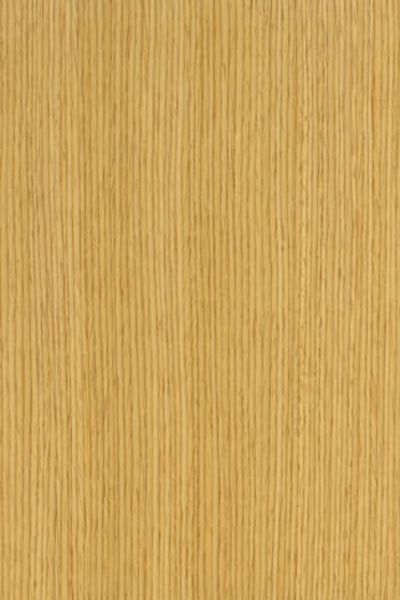 Brookside Veneers, Produced by Alpi Spa. Learn About Veneer Cut & Matching
Brookside Veneers, Produced by Alpi Spa. Learn About Veneer Cut & Matching -
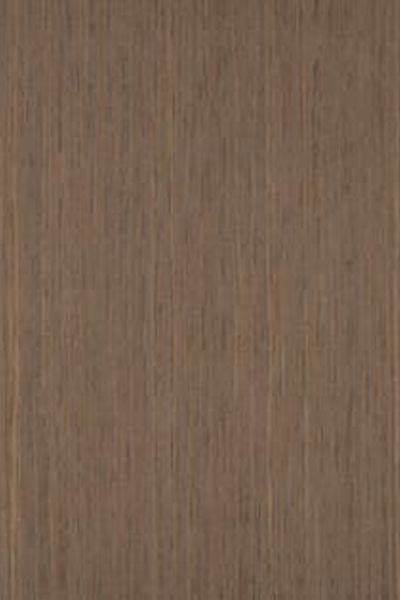 Brookside Veneers, Produced by Alpi Spa. Learn About Veneer Cut & Matching
Brookside Veneers, Produced by Alpi Spa. Learn About Veneer Cut & Matching -
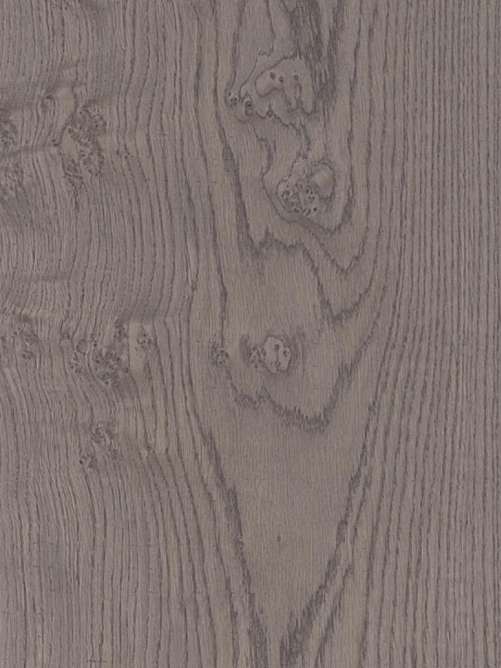 One of the most common trees in European forests, this oak has long been associated with the mythological gods due to its immense size, strength, and longevity. Like most oaks, the grain is straight with broad rays that produce a lively flake effect in flat or quarter cut wood and straight combed grain in rift cut. The golden-brown wood is slightly darker than American white oak and slightly lighter than English brown oak. Fumed veneer produces a rich chocolate-brown color similar to tropical and African woods. CoCo (color-imbued) options are available in several shades of gray and brown. Vintage oak is sliced from the hand-hewn beams of reclaimed wood from old barns and farmhouses across Europe; this rustic looking veneer is intended for use in random matched sequences. Learn About Veneer Cut & Matching
One of the most common trees in European forests, this oak has long been associated with the mythological gods due to its immense size, strength, and longevity. Like most oaks, the grain is straight with broad rays that produce a lively flake effect in flat or quarter cut wood and straight combed grain in rift cut. The golden-brown wood is slightly darker than American white oak and slightly lighter than English brown oak. Fumed veneer produces a rich chocolate-brown color similar to tropical and African woods. CoCo (color-imbued) options are available in several shades of gray and brown. Vintage oak is sliced from the hand-hewn beams of reclaimed wood from old barns and farmhouses across Europe; this rustic looking veneer is intended for use in random matched sequences. Learn About Veneer Cut & Matching -
 One of the most common trees in European forests, this oak has long been associated with the mythological gods due to its immense size, strength, and longevity. Like most oaks, the grain is straight with broad rays that produce a lively flake effect in flat or quarter cut wood and straight combed grain in rift cut. The golden-brown wood is slightly darker than American white oak and slightly lighter than English brown oak. Fumed veneer produces a rich chocolate-brown color similar to tropical and African woods. CoCo (color-imbued) options are available in several shades of gray and brown. Vintage oak is sliced from the hand-hewn beams of reclaimed wood from old barns and farmhouses across Europe; this rustic looking veneer is intended for use in random matched sequences. Learn About Veneer Cut & Matching
One of the most common trees in European forests, this oak has long been associated with the mythological gods due to its immense size, strength, and longevity. Like most oaks, the grain is straight with broad rays that produce a lively flake effect in flat or quarter cut wood and straight combed grain in rift cut. The golden-brown wood is slightly darker than American white oak and slightly lighter than English brown oak. Fumed veneer produces a rich chocolate-brown color similar to tropical and African woods. CoCo (color-imbued) options are available in several shades of gray and brown. Vintage oak is sliced from the hand-hewn beams of reclaimed wood from old barns and farmhouses across Europe; this rustic looking veneer is intended for use in random matched sequences. Learn About Veneer Cut & Matching -
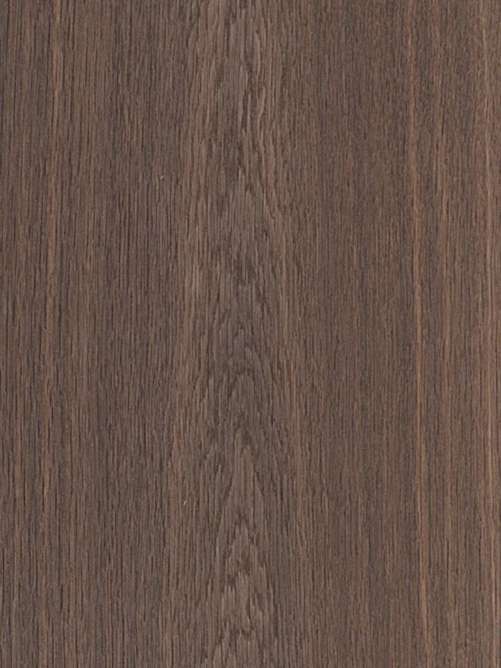 One of the most common trees in European forests, this oak has long been associated with the mythological gods due to its immense size, strength, and longevity. Like most oaks, the grain is straight with broad rays that produce a lively flake effect in flat or quarter cut wood and straight combed grain in rift cut. The golden-brown wood is slightly darker than American white oak and slightly lighter than English brown oak. Fumed veneer produces a rich chocolate-brown color similar to tropical and African woods. CoCo (color-imbued) options are available in several shades of gray and brown. Vintage oak is sliced from the hand-hewn beams of reclaimed wood from old barns and farmhouses across Europe; this rustic looking veneer is intended for use in random matched sequences. Learn About Veneer Cut & Matching
One of the most common trees in European forests, this oak has long been associated with the mythological gods due to its immense size, strength, and longevity. Like most oaks, the grain is straight with broad rays that produce a lively flake effect in flat or quarter cut wood and straight combed grain in rift cut. The golden-brown wood is slightly darker than American white oak and slightly lighter than English brown oak. Fumed veneer produces a rich chocolate-brown color similar to tropical and African woods. CoCo (color-imbued) options are available in several shades of gray and brown. Vintage oak is sliced from the hand-hewn beams of reclaimed wood from old barns and farmhouses across Europe; this rustic looking veneer is intended for use in random matched sequences. Learn About Veneer Cut & Matching -
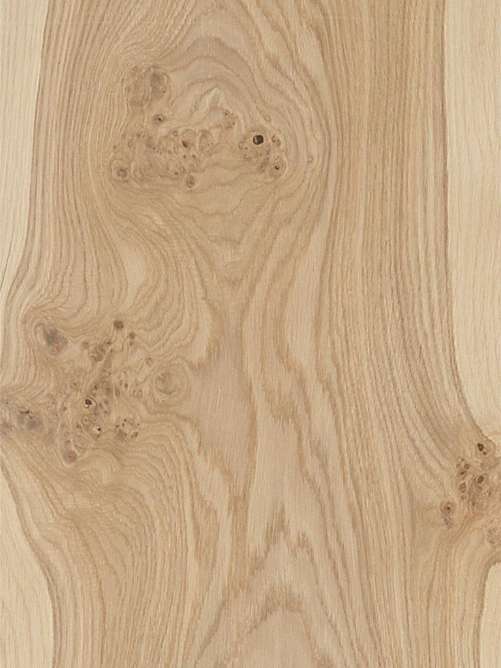 One of the most common trees in European forests, this oak has long been associated with the mythological gods due to its immense size, strength, and longevity. Like most oaks, the grain is straight with broad rays that produce a lively flake effect in flat or quarter cut wood and straight combed grain in rift cut. The golden-brown wood is slightly darker than American white oak and slightly lighter than English brown oak. Fumed veneer produces a rich chocolate-brown color similar to tropical and African woods. CoCo (color-imbued) options are available in several shades of gray and brown. Vintage oak is sliced from the hand-hewn beams of reclaimed wood from old barns and farmhouses across Europe; this rustic looking veneer is intended for use in random matched sequences. Learn About Veneer Cut & Matching
One of the most common trees in European forests, this oak has long been associated with the mythological gods due to its immense size, strength, and longevity. Like most oaks, the grain is straight with broad rays that produce a lively flake effect in flat or quarter cut wood and straight combed grain in rift cut. The golden-brown wood is slightly darker than American white oak and slightly lighter than English brown oak. Fumed veneer produces a rich chocolate-brown color similar to tropical and African woods. CoCo (color-imbued) options are available in several shades of gray and brown. Vintage oak is sliced from the hand-hewn beams of reclaimed wood from old barns and farmhouses across Europe; this rustic looking veneer is intended for use in random matched sequences. Learn About Veneer Cut & Matching -
 English brown oak isn’t actually a separate species; rather it’s the result of a fungus that has infested the heartwood of European oak and turned it a rich, dark brown. When that process doesn’t deteriorate the wood itself, it’s sliced to produce this highly desirable, deep brown veneer. Available in flat or quarter cuts as well as rift cut, which produces an exquisite flake pattern when sliced across the wood’s broad medullary rays. Learn About Veneer Cut & Matching
English brown oak isn’t actually a separate species; rather it’s the result of a fungus that has infested the heartwood of European oak and turned it a rich, dark brown. When that process doesn’t deteriorate the wood itself, it’s sliced to produce this highly desirable, deep brown veneer. Available in flat or quarter cuts as well as rift cut, which produces an exquisite flake pattern when sliced across the wood’s broad medullary rays. Learn About Veneer Cut & Matching -
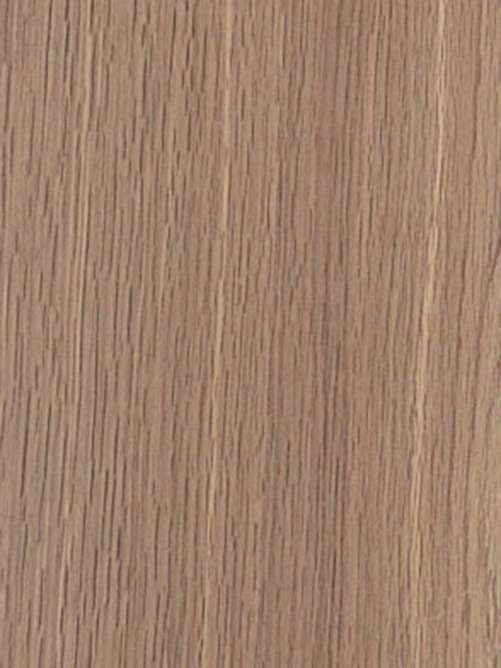 One of the most common trees in European forests, this oak has long been associated with the mythological gods due to its immense size, strength, and longevity. Like most oaks, the grain is straight with broad rays that produce a lively flake effect in flat or quarter cut wood and straight combed grain in rift cut. The golden-brown wood is slightly darker than American white oak and slightly lighter than English brown oak. Fumed veneer produces a rich chocolate-brown color similar to tropical and African woods. CoCo (color-imbued) options are available in several shades of gray and brown. Vintage oak is sliced from the hand-hewn beams of reclaimed. Learn About Veneer Cut & Matching
One of the most common trees in European forests, this oak has long been associated with the mythological gods due to its immense size, strength, and longevity. Like most oaks, the grain is straight with broad rays that produce a lively flake effect in flat or quarter cut wood and straight combed grain in rift cut. The golden-brown wood is slightly darker than American white oak and slightly lighter than English brown oak. Fumed veneer produces a rich chocolate-brown color similar to tropical and African woods. CoCo (color-imbued) options are available in several shades of gray and brown. Vintage oak is sliced from the hand-hewn beams of reclaimed. Learn About Veneer Cut & Matching -
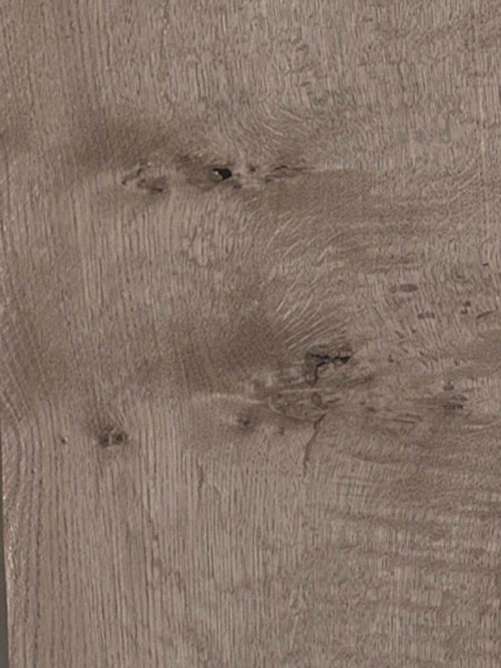 One of the most common trees in European forests, this oak has long been associated with the mythological gods due to its immense size, strength, and longevity. Like most oaks, the grain is straight with broad rays that produce a lively flake effect in flat or quarter cut wood and straight combed grain in rift cut. The golden-brown wood is slightly darker than American white oak and slightly lighter than English brown oak. Fumed veneer produces a rich chocolate-brown color similar to tropical and African woods. CoCo (color-imbued) options are available in several shades of gray and brown. Vintage oak is sliced from the hand-hewn beams of reclaimed. Learn About Veneer Cut & Matching
One of the most common trees in European forests, this oak has long been associated with the mythological gods due to its immense size, strength, and longevity. Like most oaks, the grain is straight with broad rays that produce a lively flake effect in flat or quarter cut wood and straight combed grain in rift cut. The golden-brown wood is slightly darker than American white oak and slightly lighter than English brown oak. Fumed veneer produces a rich chocolate-brown color similar to tropical and African woods. CoCo (color-imbued) options are available in several shades of gray and brown. Vintage oak is sliced from the hand-hewn beams of reclaimed. Learn About Veneer Cut & Matching -
 One of the most common trees in European forests, this oak has long been associated with the mythological gods due to its immense size, strength, and longevity. Like most oaks, the grain is straight with broad rays that produce a lively flake effect in flat or quarter cut wood and straight combed grain in rift cut. The golden-brown wood is slightly darker than American white oak and slightly lighter than English brown oak. Fumed veneer produces a rich chocolate-brown color similar to tropical and African woods. CoCo (color-imbued) options are available in several shades of gray and brown. Vintage oak is sliced from the hand-hewn beams of reclaimed. Learn About Veneer Cut & Matching
One of the most common trees in European forests, this oak has long been associated with the mythological gods due to its immense size, strength, and longevity. Like most oaks, the grain is straight with broad rays that produce a lively flake effect in flat or quarter cut wood and straight combed grain in rift cut. The golden-brown wood is slightly darker than American white oak and slightly lighter than English brown oak. Fumed veneer produces a rich chocolate-brown color similar to tropical and African woods. CoCo (color-imbued) options are available in several shades of gray and brown. Vintage oak is sliced from the hand-hewn beams of reclaimed. Learn About Veneer Cut & Matching -
 One of the most common trees in European forests, this oak has long been associated with the mythological gods due to its immense size, strength, and longevity. Like most oaks, the grain is straight with broad rays that produce a lively flake effect in flat or quarter cut wood and straight combed grain in rift cut. The golden-brown wood is slightly darker than American white oak and slightly lighter than English brown oak. Fumed veneer produces a rich chocolate-brown color similar to tropical and African woods. CoCo (color-imbued) options are available in several shades of gray and brown. Vintage oak is sliced from the hand-hewn beams of reclaimed. Learn About Veneer Cut & Matching
One of the most common trees in European forests, this oak has long been associated with the mythological gods due to its immense size, strength, and longevity. Like most oaks, the grain is straight with broad rays that produce a lively flake effect in flat or quarter cut wood and straight combed grain in rift cut. The golden-brown wood is slightly darker than American white oak and slightly lighter than English brown oak. Fumed veneer produces a rich chocolate-brown color similar to tropical and African woods. CoCo (color-imbued) options are available in several shades of gray and brown. Vintage oak is sliced from the hand-hewn beams of reclaimed. Learn About Veneer Cut & Matching -
 One of the most common trees in European forests, this oak has long been associated with the mythological gods due to its immense size, strength, and longevity. Like most oaks, the grain is straight with broad rays that produce a lively flake effect in flat or quarter cut wood and straight combed grain in rift cut. The golden-brown wood is slightly darker than American white oak and slightly lighter than English brown oak. Fumed veneer produces a rich chocolate-brown color similar to tropical and African woods. CoCo (color-imbued) options are available in several shades of gray and brown. Vintage oak is sliced from the hand-hewn beams of reclaimed. Learn About Veneer Cut & Matching
One of the most common trees in European forests, this oak has long been associated with the mythological gods due to its immense size, strength, and longevity. Like most oaks, the grain is straight with broad rays that produce a lively flake effect in flat or quarter cut wood and straight combed grain in rift cut. The golden-brown wood is slightly darker than American white oak and slightly lighter than English brown oak. Fumed veneer produces a rich chocolate-brown color similar to tropical and African woods. CoCo (color-imbued) options are available in several shades of gray and brown. Vintage oak is sliced from the hand-hewn beams of reclaimed. Learn About Veneer Cut & Matching -
 This contrasty African relative of rosewood has a deep brown background with notable dark brown to ebony streaking and a nice natural luster. Outside Africa, it’s increasingly used as a more affordable substitute for walnut. Produced in both quarter and flat cut veneers, this intense and well-veined veneer is in demand for high-end architectural settings--the stronger the veining, the more valuable the wood. Due to its excellent tonal qualities, the wood is prized for the production of musical instruments. Learn About Veneer Cut & Matching
This contrasty African relative of rosewood has a deep brown background with notable dark brown to ebony streaking and a nice natural luster. Outside Africa, it’s increasingly used as a more affordable substitute for walnut. Produced in both quarter and flat cut veneers, this intense and well-veined veneer is in demand for high-end architectural settings--the stronger the veining, the more valuable the wood. Due to its excellent tonal qualities, the wood is prized for the production of musical instruments. Learn About Veneer Cut & Matching -
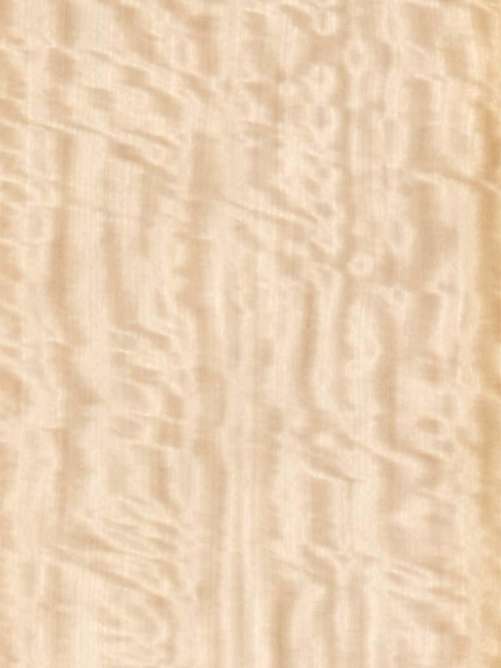 Movingui is an exotic wood with a lustrous surface, fine texture, and bright lemony-gold to orange-brown color. It has a fine, even texture, and produces a variety of figures including fiddle back, mottle, and bee’s wing. Deviations in the fiber appear as horizontal stripes that emphasize its satiny finish. Because it resembles satinwood, particularly in its intense luster, it’s sometimes called Nigerian satinwood. Learn About Veneer Cut & Matching
Movingui is an exotic wood with a lustrous surface, fine texture, and bright lemony-gold to orange-brown color. It has a fine, even texture, and produces a variety of figures including fiddle back, mottle, and bee’s wing. Deviations in the fiber appear as horizontal stripes that emphasize its satiny finish. Because it resembles satinwood, particularly in its intense luster, it’s sometimes called Nigerian satinwood. Learn About Veneer Cut & Matching -
 One of the largest trees in equatorial Africa, this tropical hardwood’s immense size ensures large leaves and volumes of veneer well suited for architectural use. Regarded for its shimmering luster that refracts light, this species ranges from pinkish brown to rich red in color with a fine, even texture, and a typically straight grain that may be decorated with a wide range of widely variable figures, including a highly prized Pommele. As with most veneers, almost every log is unique. Learn About Veneer Cut & Matching
One of the largest trees in equatorial Africa, this tropical hardwood’s immense size ensures large leaves and volumes of veneer well suited for architectural use. Regarded for its shimmering luster that refracts light, this species ranges from pinkish brown to rich red in color with a fine, even texture, and a typically straight grain that may be decorated with a wide range of widely variable figures, including a highly prized Pommele. As with most veneers, almost every log is unique. Learn About Veneer Cut & Matching

